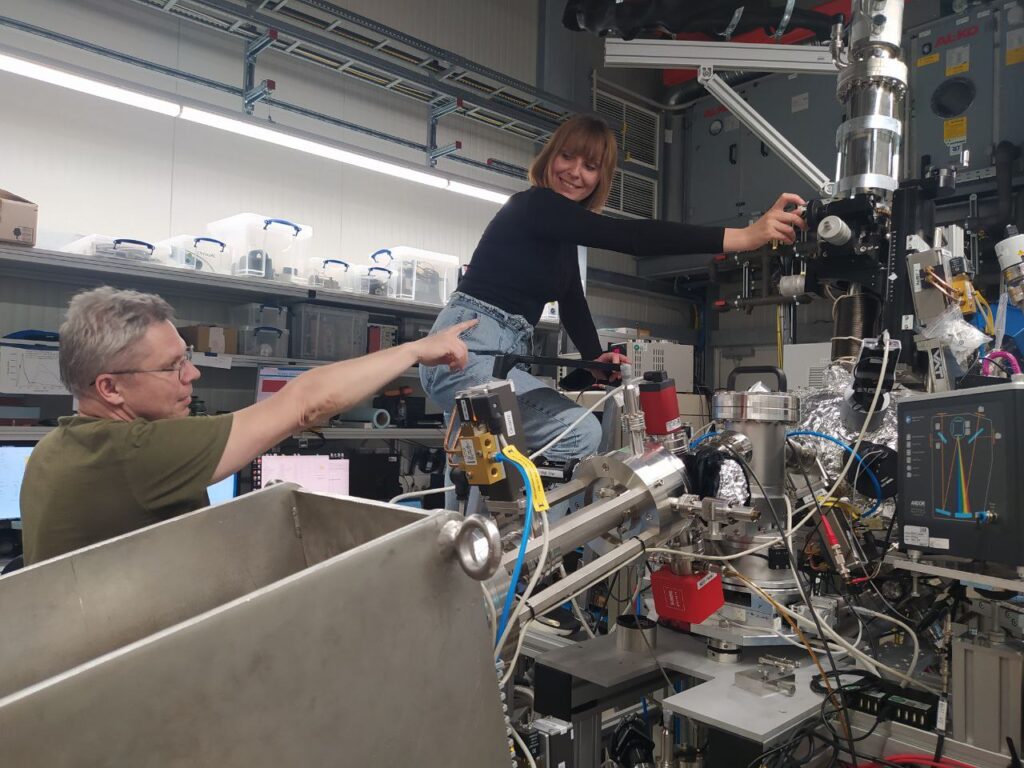Valentyna Levchyk, a chemist fromTaras Shevchenko National University of Kyiv, Ukraine, benefitted from the great opportunity of the NEPHEWS Twinning Programme, which enabled her to participate in experimental research at beamline P66 for time-resolved luminescence spectroscopy at one of Europe’s leading synchrotron facilities — PETRA III, located at DESY in Hamburg.
Valentyna’s research background is in analytical chemistry, microextraction techniques, UV-Vis and FTIR spectroscopy, and the development of novel hybrid materials, including materials for sensors and energy-related applications.
During her time at DESY, Valentyna joined an experiment focused on UV/VUV-excited photoluminescence using site-selective spectroscopy of inorganic materials. “Prior to this programme, I had no hands-on experience with synchrotron radiation, although I was familiar with its principles through literature.”
As a first step, she gained practical skills in the sample preparation with specific requirements for luminescence measurements with VUV excitation that are to be carried out in high vacuum and some of them at low temperatures. For example, sample powders are to be pressed in special cuvettes, which are glued to the sample holder using special silver glue. The sample holder is then connected with closed cycle cryostat that is loaded to the sample chamber with a special crane.
During the second day, Valentyna was introduced to the operation of the facility, namely, the features of the vacuum system, beamshutters, filters, gratings, detectors, wavelengths for starting the analysis. The first excitation and emission spectra of reference samples were recorded.
“On the third day and throughout the internship, I participated in the measurements of luminescence properties including those synthesized in my home laboratory. Experienced colleagues shared with me knowledge regarding the special details of experimental control and analysis. Working at large scale facility, conducting experiments under UHV (ultrahigh vacuum) conditions, with modern spectroscopic equipment and detectors, analyzing luminescence spectra and interpreting of the resolved spectral features, all these things represent a new technical challenge for me. This gives me a great impact for the further development of my skills, experience and carrier.”
The acquired data allowed to identify localized energy levels and defect states; understand excitation and energy transfer processes and correlate spectroscopic features with structural characteristics of the samples, vanadate nanoparticles.
“These results are directly applicable to my ongoing research on functional luminescent materials and will form the scientific basis for the creation of a new generation of luminescent compositions.”
Valentyna plans to integrate the knowledge gained during this twinning project into teaching and collaborative research in Ukraine and to initiate future joint projects at PETRA III.
“I am sincerely grateful for the opportunity to participate in Oksana Chukova’s beamtime at P66 and for the generous support and mentorship by the entire beamline team and Yurii Hizhnyi. This experience showed me how powerful synchrotron techniques are for materials science and confirmed the importance of open-access initiatives like the NEPHEWS Twinning Programme. Also, I would like to express my great thanks to Dr. Aleksei Kotlov, P66 beamline manager for detailed instructions, explanations, support during experiments and for his kind excursion to PETRA III experimental hall, overview of other experimental facilities and laboratories.”

Valentyna during her stay at beamline P66 at PETRA III together with Yurii Hizhnyi from “Donetsk Institute for Physics and Engineering named after O.O. Galkin”, National Academy of Sciences of Ukraine.